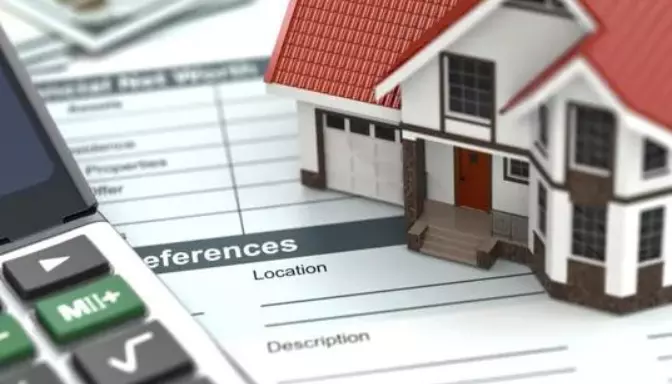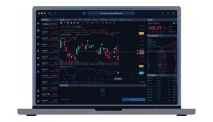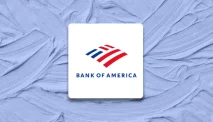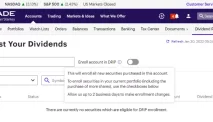Diksia.com - If you are a real estate investor, you probably know that selling your investment property can trigger a hefty tax bill. Depending on your income level and the type of property you own, you may have to pay up to 37% in federal income tax, plus state and local taxes, on the capital gains you realize from the sale.
But what if there was a way to avoid paying taxes on your profits and reinvest them in another property instead? That’s where a 1031 exchange comes in.
A 1031 exchange, also known as a like-kind exchange, is a tax-deferment strategy that allows you to swap one investment property for another of equal or greater value, without paying any capital gains tax on the transaction. This way, you can defer your tax liability until you sell the new property, or indefinitely if you keep doing 1031 exchanges.
A 1031 exchange can help you achieve several benefits, such as:
- Preserving your capital and increasing your cash flow
- Diversifying your portfolio and accessing new markets
- Upgrading to better properties and improving your returns
- Consolidating or exchanging multiple properties for one or more
- Changing the type or use of your property and optimizing your strategy
However, a 1031 exchange is not a simple process. It involves complex rules and strict deadlines that you must follow to qualify for the tax benefits. It also requires the use of a qualified intermediary, a third-party entity that holds the proceeds from the sale and facilitates the purchase of the new property.
In this article, we will explain the basics of a 1031 exchange, how to do it, and what are the best types of investments to use it for. We will also provide some examples and tips to help you make the most of this powerful strategy.
What Is a 1031 Exchange and How Does It Work?
A 1031 exchange is named after Section 1031 of the Internal Revenue Code, which states that “no gain or loss shall be recognized on the exchange of real property held for productive use in a trade or business or for investment if such property is exchanged solely for property of like kind which is to be held either for productive use in a trade or business or for investment.”
In other words, a 1031 exchange allows you to swap one investment property for another without paying any capital gains tax on the difference in value, as long as the properties are of similar nature or character, regardless of their quality or grade.
For example, you can exchange an apartment building for a shopping center, a vacant land for an office building, or a single-family rental for a multi-family complex. You can also exchange multiple properties for one or more, or vice versa, as long as the net market value and equity of the properties are equal or greater.
The main requirement for a 1031 exchange is that the properties must be held for productive use in a trade or business or for investment, not for personal use. This means that you cannot use a 1031 exchange for your primary residence, vacation home, or second home, unless you meet certain criteria.
Another requirement is that the properties must be located in the United States, as foreign properties are not considered like-kind to domestic properties.
To do a 1031 exchange, you must follow these steps:
- Identify the property you want to sell. This is the property you will relinquish in the exchange, also known as the relinquished property.
- Hire a qualified intermediary. This is a person or entity that acts as a middleman between you and the buyer and seller of the properties. The qualified intermediary will hold the proceeds from the sale of the relinquished property in a separate escrow account and use them to purchase the new property. You cannot touch or control the money during the exchange, or you will lose the tax benefits.
- List and sell your property. You can sell your property to anyone, except for a related party, such as a family member or a business partner. The buyer of your property will pay the purchase price to the qualified intermediary, not to you directly.
- Identify the property you want to buy. This is the property you will acquire in the exchange, also known as the replacement property. You must identify the property within 45 days of closing the sale of the relinquished property, by sending a written notice to the qualified intermediary or another party involved in the exchange. You can identify up to three potential replacement properties, regardless of their value, or more than three, as long as their combined value does not exceed 200% of the value of the relinquished property.
- Buy the new property. You must close the purchase of the replacement property within 180 days of closing the sale of the relinquished property, or by the due date of your tax return for the year of the sale, whichever is earlier. The qualified intermediary will use the proceeds from the sale of the relinquished property to pay for the purchase of the replacement property, and transfer the title to you.
- Report the exchange to the IRS. You must report the details of the 1031 exchange on Form 8824, Like-Kind Exchanges, and attach it to your tax return for the year of the exchange. You must also report the basis, depreciation, and gain or loss of the properties involved in the exchange on Form 4797, Sales of Business Property, and Schedule E, Supplemental Income and Loss.
What Are the Best Types of Investments for a 1031 Exchange?
A 1031 exchange can be used for any type of real property that is held for productive use in a trade or business or for investment, as long as it is exchanged for a property of like kind. However, some types of investments may be more suitable for a 1031 exchange than others, depending on your goals and preferences.
Here are some of the best types of investments for a 1031 exchange:
- Delaware Statutory Trusts (DSTs). A DST is a legal entity that owns and operates one or more properties, such as apartment buildings, office buildings, or shopping centers. Investors can buy shares of a DST and own a fractional interest in the underlying properties. A DST is considered a direct ownership of real estate, and therefore qualifies for a 1031 exchange. A DST offers several advantages for investors, such as diversification, professional management, passive income, and low minimum investment. However, a DST also has some drawbacks, such as lack of control, illiquidity, and fees.
- Qualified Opportunity Funds (QOFs). A QOF is an investment vehicle that invests in designated low-income areas, known as Qualified Opportunity Zones (QOZs). The QOZ program was created by the Tax Cuts and Jobs Act of 2017, to encourage economic development and job creation in distressed communities. Investors can defer and reduce their capital gains tax by investing in QOFs, as well as eliminate the tax on the appreciation of their QOF investment if they hold it for at least 10 years. A QOF can be used as a replacement property in a 1031 exchange, as long as it meets the like-kind requirement. A QOF offers several benefits for investors, such as tax savings, social impact, and potential growth. However, a QOF also has some risks, such as uncertainty, volatility, and complexity.
- Triple Net Lease (NNN) Properties. A NNN property is a type of commercial property that is leased to a single tenant, usually for a long term, such as 10 to 25 years. The tenant is responsible for paying all the expenses of the property, such as property taxes, building insurance, and maintenance, in addition to the rent. The landlord receives a steady and predictable income, without any management or operational responsibilities. A NNN property can be a good option for a 1031 exchange, as it provides a hassle-free and reliable investment. However, a NNN property also has some disadvantages, such as dependency on the tenant, lack of diversification, and limited appreciation.
Examples of 1031 Exchange Investments
To illustrate how a 1031 exchange works in practice, let’s look at some examples of different scenarios and outcomes.
Example 1: Simple Exchange
John owns a duplex in Los Angeles that he bought for $500,000 five years ago. He rents out both units and collects $3,000 per month in rental income. He decides to sell the duplex and buy a fourplex in Dallas, which costs $800,000 and generates $6,000 per month in rental income. He hires a qualified intermediary and follows the 1031 exchange rules. Here is the result of his exchange:
- He sells the duplex for $700,000, which means he has a capital gain of $200,000. However, he does not have to pay any capital gains tax on the sale, as he reinvests the entire proceeds in the fourplex.
- He buys the fourplex for $800,000, using the $700,000 from the sale of the duplex and a $100,000 mortgage. He increases his rental income from $3,000 to $6,000 per month, and his property value from $500,000 to $800,000.
- He defers his tax liability until he sells the fourplex, or indefinitely if he does another 1031 exchange. He also keeps his original basis of $500,000.
Example 2: Diversified Exchange
Mary owns a single-family rental in Miami that she bought for $300,000 10 years ago. She rents it out for $2,000 per month and has a mortgage balance of $150,000. She decides to sell the rental and buy two DSTs, one that owns a portfolio of self-storage facilities in Texas, and another that owns a medical office building in Arizona. She hires a qualified intermediary and follows the 1031 exchange rules. Here is the result of her exchange:
- She sells the rental for $400,000, which means she has a capital gain of $100,000. However, she does not have to pay any capital gains tax on the sale, as she reinvests the entire proceeds in the DSTs.
- She buys the DSTs for $400,000, using the $250,000 from the sale of the rental and a $150,000 loan from the DST sponsor. She owns a 10% interest in each DST, which pays her a monthly distribution of $1,500 and $1,000, respectively. She diversifies her portfolio and reduces her management responsibilities, as the DST sponsor handles all the operations and maintenance of the properties.
- She defers her tax liability until she sells the DSTs, or indefinitely if she does another 1031 exchange. She also keeps her original basis of $300,000.
Example 3: Upgraded Exchange
Tom owns a retail strip center in Chicago that he bought for $1 million 15 years ago. He leases it out to several tenants and earns $10,000 per month in net operating income. He decides to sell the strip center and buy a QOF that invests in a mixed-use development project in a QOZ in Atlanta. He hires a qualified intermediary and follows the 1031 exchange rules. Here is the result of his exchange:
- He sells the strip center for $1.5 million, which means he has a capital gain of $500,000. However, he does not have to pay any capital gains tax on the sale, as he reinvests the entire proceeds in the QOF.
- He buys the QOF for $1.5 million, using the $1.5 million from the sale of the strip center. He owns a 10% interest in the QOF, which pays him a monthly distribution of $7,500 and projects a 15% annual return on his investment. He upgrades his property and participates in the economic revitalization of a QOZ.
- He defers his tax liability until he sells the QOF, or until December 31, 2026, whichever is earlier. He also reduces his tax liability by 10% if he holds the QOF for at least five years, and by another 5% if he holds it for at least seven years. He also eliminates the tax liability on the appreciation of his QOF investment if he holds it for at least 10 years.
These are just some examples of how a 1031 exchange can help you defer taxes and grow your wealth. However, each situation is different and may require a different approach. Therefore, it is advisable to consult with a professional tax advisor and a qualified intermediary before engaging in a 1031 exchange. They can help you evaluate your options, identify the best properties, and execute the exchange smoothly and successfully.






